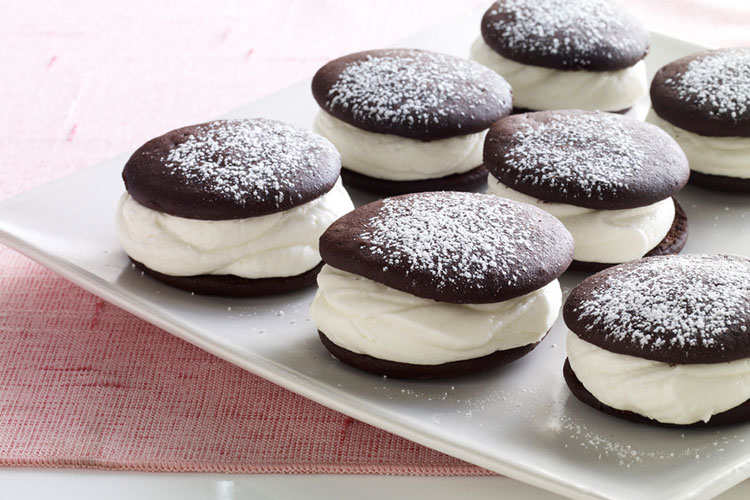Adequate hydration is crucial for performance in active people. In the body, water acts as a solute and solvent; a carrier, coolant, shock absorber and more. During exercise, water protects working muscles from overheating by circulating heat and redistributing it throughout the body via the bloodstream. Sweat, which is mostly water, evaporates off the skin to help release that heat and cool your core temperature. The longer a workout lasts, the more water is lost through sweat and therefore must be replaced to allow the body to continue to do the important job of cooling.
When it comes to how you should hydrate during exercise to prevent large weight losses and dehydration there are two approaches: following a “schedule” to replace fluids or simply relying on thirst to guide fluid intake during and after exercise. Below, we explain these approaches in more detail — and offer tips to help you develop the best hydration plan for you.
Static fluid recommendations, somewhat independent of thirst, have been used to guide athletes on the proper amount to consume before, during and after workouts to prevent dehydration. The biggest reason for such recommendations is actually a small innate “problem” with thirst. Your thirst is triggered after we become slightly dehydrated (approximately 1.7–3.5%). This means that an athlete might already be on their way to a state of significant dehydration when their thirst mechanism kicks in. In addition,stopping to drink when thirsty may not be feasible for some athletes. Or even more likely, an athlete may not be in tune with their thirst drive due to focusing on their training or competition.
Climate is another factor that challenges your thirst mechanism. When exercising in very hot weather (high 90s and above), your thirst may not be a strong enough drive to replace the water lost from sweat. Surprisingly, cold weather (41°F degrees or lower) also poses a challenge because it can increase the level of dehydration required to initiate thirst. You should therefore be vigilant about fluid intake in either very hot or cold temperatures.
Approach #1: Following a Hydration “Schedule”
For all these reasons, the most widely used fluid recommendations encourage athletes to not rely solely on thirst to guide their intake. Rather you should implement a regular rhythm of fluid intake that has been practiced and mastered in training and leads to a desirable performance outcome. This might look like drinking 4–6 sips of fluid every 15–30 minutes, regardless of thirst. Strict rehydration rules should also be followed after a workout to compensate for water-related weight loss.
Approach #2: Listening to Your Thirst
While those recommendations are a great starting place, some research suggests that athletes, particularly endurance athletes, need more individualized guidance that is driven by the body’s natural signals of thirst. Even though thirst is initiated after mild dehydration, some studies show that fluid intake driven by thirst alone is adequate for maintaining performance and recovering properly after exercise. This is especially the case in distance runners, to whom overhydration and subsequent hyponatremia (dangerously low sodium levels in the blood) can easily happen due to a fear of not drinking enough.
In this thirst-driven approach, athletes should therefore consume both water and sports drinksthroughout their training and competition and follow their thirst to guide intake. While mild levels of dehydration may occur, some studies show that thirst-driven intake adequately replaced losses in the 24 hours following a workout.
Blending Them Together
So which of these schools of thought is right for you? There are lessons you can take from each of these perspectives to craft your own personal hydration strategy. As with all elements of sports nutrition, finding your perfect routine comes from practice.
Try out these suggestions to determine your ideal hydration plan:
- Track your weight before and after exercise to get a general idea of how much you sweat. If you lose more than 2% of your body weight during a workout, you may need to drink more fluid. Conversely, if you gain weight during a workout, you probably drank more fluid than you needed. Try listening to your thirst cues to see if it better guides your intake.
- If you have to urinate frequently during exercise, you may be drinking too much. If you have small amounts of dark urine during the day of your training, you probably did not drink enough or rehydrate with enough fluid.
- Whenever you begin a new season of training or your climate changes to hotter or colder temperatures, a set hydration strategy may be beneficial. Start with a guideline of 4–6 sips of fluid every 15–30 minutes.
- When stakes are low, practice listening to your thirst as your guide for drinking during training. Use the first three suggestions above to determine how successful you were.
- If you are a slower-pace endurance runner (a marathon runner with a pace of 4 ½ hours or longer), be mindful of overhydrating during long runs and races. Use your thirst, weight change and urination rate to determine the best hydration strategy for you.
- Ensure you start your workout adequately hydrated. Urine volume and color can be a good indicator. A small amount of dark-colored urine likely indicates low hydration levels.
- Be aware of the symptoms of dehydration: dry mouth, headache, fatigue, dry skin, rapid heartbeat, rapid breathing and dizziness.
Written By My Fitness Pal
Do you have trouble sleeping? If so, you’re like the 50–70 million Americans that the Centers for Disease Control and Prevention estimates have sleep or wakefulness disorders. To say that sleep is essential for good health is an understatement, which is why those of us who have trouble sleeping are always on the lookout for solutions.
One touted solution you may have heard of is melatonin, a supplement that some claim wards off jet lag and sleep issues. But, does it really help do that? First, let’s get the scoop on what this supplement is about, and then dive into the nitty-gritty data on whether or not it works.
What is melatonin?
Melatonin is a hormone that helps regulate your body’s internal clock, which drives your sleep and wake cycles. Your brain naturally produces melatonin in response to a lack of light at night. As your melatonin level peaks around bedtime, you become groggy and drift off to sleep. However, most of us live in a brightly lit world surrounded by artificial light, and phone, computer and television screens, which can affect our body’s natural production of melatonin.
5 Ways Melatonin Supplements Can Improve Your Sleep
Some research suggests that taking a melatonin supplement at the right time might help treat jet lag, insomnia or other sleep disruptions. Melatonin can also reduce the time it takes to fall asleep, although this effect is typically mild.
It might also play an important role with pain. How? Pain can reduce both the length and quality of sleep, and poor sleep can increase the experience of pain. Promoting good, restful sleep can minimize the experience of pain as you heal. Sleep also is important to the healing process. Healthy levels of melatonin during sleep act as an antioxidant and can help support the overall process of normal healing. To summarize, melatonin supplements can support you in several ways:
- Decrease the time to fall asleep*
- Improve the ability to stay asleep*
- Enhance the depth of sleep*
- Help maintain normal circadian rhythms*
- Act as an antioxidant to support health and healing*
4 Essential Things to Know About Getting More Melatonin
Thinking about a melatonin supplement? Here are 4 things you should know:
- Keep an eye out for dose. An amount of bedtime melatonin as low as 0.3 mg has been shown to help improve sleep quality. Daily amounts in the range of 3–10 mg are more commonly used.
- Know your source. Depending on your preference, you can get more melatonin via supplements or through food. Small amounts of melatonin are found in foods such as walnuts, corn and asparagus. Some research suggests that the concentrated juice of the tart cherry (also known as sour or Montmorency cherry) is a good source, although the research is conflicting.
- Be aware of side effects. When taken as suggested, side effects from a melatonin supplement are uncommon. Possible melatonin side effects include daytime sleepiness, headaches and dizziness. Other, less common melatonin side effects include abdominal discomfort, mild anxiety, irritability, confusion and short-lasting feelings of depression.
- Keep your health history in mind. If you are considering a melatonin supplement, then check with your health-care professional first, especially if you are pregnant, have a health condition or are taking other medications. Melatonin supplements can interact with blood thinning medications, diabetes medications, immunosuppressant and birth control pills.
*These statements have not been evaluated by the Food and Drug Administration. This product is not intended to diagnose, treat, cure or prevent any disease.
Written By My Fitness Pal
High-intensity interval training, kettlebells, CrossFit and other more extreme forms of exercise seem to get all the attention these days. But if you’re new to working out or are looking for something a little less intense, you may wonder: What’s wrong with a good, old-fashioned walking program?
The answer: Nothing! Walking is an excellent form of exercise that can help you build fitness and help you lose weight (so long as you are creating a calorie deficit, as with any form of exercise). In fact, it’s so beneficial that it’s worth adding to a healthy lifestyle even if you are already a regular, more advanced exerciser.
Walking is free and easy on the joints, and there’s no special equipment or skills needed to do it. It offers so many incredible health and fitness benefits, including boosting your immunity, strengthening your bones and even improving your sleep quality.
Walking is also a simple way to get your weekly recommended dose of exercise. The Centers for Disease Control and Prevention recommends that adults get at least 150 minutes of moderate-intensity aerobic activity each week, and a brisk walk is a simple way to make sure you reach those guidelines.
Regular exercisers can use walking as a way to add more activity throughout the day. If you hit the gym often, but you’re sedentary for most of the day — as many office workers are — it may not be enough to stay healthy. One 2015 study found that a consistent 90-minute daily workout wasn’t enough to combat the ill effects of prolonged sitting. So even if you’re already following a regular workout plan, consider adding walks throughout your day. It’ll help break up long periods of sitting at a desk or in a car for improved health benefits without having to spend more time “working out.”
Once you’re a regular walker, consider adding a few additional elements to your plan. Including strength and flexibility training can help you gain strength and stamina, and they can also help you walk farther and faster — while staying injury-free.
In addition to regular aerobic exercise, the CDC recommends adults perform total-body muscle-strengthening activities at least 2 days per week. After you’ve established your walking habit, include strength-training sessions on days you don’t walk to develop muscles that shape your body and protect your joints. You can even incorporate some of your strength training into a walk — check out this 30-minute walking and strength workout for some ideas on how to safely strengthen your body and stay low-impact at the same time.
Finally, once you’ve included a balance of resistance and aerobic training in your schedule, don’t forget the flexibility component. Stretching can improve your performance during your workouts, bolstering your strength, mobility and range of motion. Not sure how to begin stretching? Check out these 6 seated stretches for walkers that can be done easily at home using just a chair. Stretch sessions don’t require a lot of extra time or effort so you can add them into your schedule up to 7 days a week. Feel free to start with a more reasonable goal of of 2–3 weekly sessions.
The bottom line? Walking is a wonderful form of exercise and a great way to build a regular fitness habit, but if you limit yourself to only walks, you may be missing out on strong, shapely muscles and overuse injuries in the long term. Try adding regular strength and flexibility work to your weekly program once you’ve established a routine for best results and walking longevity.
Written By My Fitness Pal
By now most of us know too much sugar isn’t good for us and that overdoing it on the sweet stuff is linked to obesity, Type 2 diabetes, metabolic disease, fatty liver and other chronic health conditions. For whatever reason though, most of us still find it hard to resist sweet treats, beverages and snacks.
I’m willing to bet many of us have experienced intense sugar cravings or have binged on sweets before — experiences that leave us feeling powerless in the presence of certain foods and questioning whether we have a sugar dependency. But is sugar addiction even real? This is one of the most common questions I hear as a dietitian — the answer to which boils down to whether sugar is an addictive substance or not.
Is sugar addictive?
Despite many similarities in addiction characteristics — like bingeing, tolerance and withdrawal — the Diagnostic and Statistical Manual of Mental Disorders, the manual by which mental-health professionals classify mental disorders in the United States, does not currently contain a clinical diagnosis specifically for sugar or food addiction. This is largely because there is little clinical research in humans to substantiate the idea that food or sugar addictions are real.
But just because we lack a diagnosis for sugar addiction doesn’t mean that sugar isn’t addictive.
Eric Stice, PhD, a neuroscientist who has extensively studied sugar’s effects on the brain, says consuming highly palatable foods — like those containing high amounts of sugar — activates the same key reward regions of the brain that are triggered when a person does drugs like cocaine. Biologically this makes sense since, back in our hunting and gathering days, sugar was a rare and valuable source of energy. Back then, a strong reward response to sugar was beneficial since it sent us seeking more. This also explains how the human body has adapted to almost effortlessly convert sugar into fat.
n addition to brain-imaging studies in humans, there is strong animal research to support the legitimacy of sugar addiction. “In regards to animal data, I can be a little more assured about a true addiction with intermittent sugar intake, which has been proven in animal models,” says Dr. James DiNicolantonio, a doctor of pharmacy. “Not because sugar activates similar neurochemical pathways but because rats fed intermittent sugar intake go through druglike withdrawals when sugar is removed from their diets. Not only that, giving rats who are consuming an intermittent sugar intake regime naloxone, an opiate antagonist, also produces withdrawals — the same withdrawals experienced if hooked on morphine or cocaine.”
When asked whether he thought sugar addiction was real, Dr. Robert Lustig, a childhood obesity expert and leading obesity researcher, said it certainly is in animals.“According to the DSM-5 criteria, sugar is addictive,” he says. “We have the data mechanistically in animals, we have the correlative data in humans and we certainly see this empirically in our patients.”
In practice, doctors and dietitians often look for addiction characteristics in a patient’s eating habits to determine whether food or sugar addiction may be present. Of those, bingeing and withdrawal are the easiest to identify, but Stice has found that people who consume high amounts of sugar can indeed develop tolerance, which further supports the notion that sugar is addictive.
What about sugar withdrawal?
Ask anyone who’s slashed added sugar from their diet cold turkey, and they’ll likely tell you sugar withdrawal is real. As is common with caffeine, nicotine and other addictive substances, people withdrawing from sugar typically feel pretty lousy during the process. The most common symptoms include irritability, fatigue, headaches, insomnia, cravings, malaise and feeling “foggy.” Of course, symptoms vary greatly and will depend upon regular sugar intake, individual physiology and whether you’re going cold turkey or using a tapering approach. If you happen to be the unfortunate person who experiences all of these symptoms simultaneously, know that it is temporary. Based on Lustig’s observations, sugar withdrawal usually lasts 4–5 days — after which patients generally report major improvements in both mood and energy levels.
5 Tips to Beat Sugar Addiction
1. Commit to cut back, and pick the approach that’ll work for you.
Leslie Lee, MS, RD, recommends abstinence and moderation as approaches to limiting sugar. Both approaches can work, but one might be better suited to your personality, eating habits and lifestyle. Quitting cold turkey requires more preparation up-front, Lee says, since you’ll have to “be prepared to manage the withdrawal symptoms, and pragmatically, one has to be prepared to eat in an entirely different manner.”
“If you’re just someone who thinks they might be overdoing it on sugar, then perhaps a gradual reduction is doable and can be accomplished with relative ease,” she adds.
Regardless of your approach, Lustig and the American Heart Association recommend a maximum of 100 calories (25 grams) of added sugar per day for women and 150 calories (37.5 grams) for men.
2. Keep your eye on the Nutrition Facts label and ingredient lists.
Being aware of hidden sources of added sugar is half the battle here. Soon Nutrition Facts labels will have to show the amount of sugar added to the packaged foods you buy, not just the total amount. That’s good news for those who may not know all of the nicknames for added sugar and have a hard time spotting it in the ingredient list.
3. Eat high-quality carbohydrates in place of added sugar.
Yes, you read that right! Love ’em or hate ’em, carbohydrates are not created equal. A diet low in added sugar doesn’t have to be low-carbohydrate, which is good news for those of us in the carb-lovers camp. A recent study led by Lustig showed that simply removing fructose (from added sugar) from the diet for just 10 days reduced liver fat, an indicator of metabolic disease, by nearly 30%. Wholesome carbohydrates to consider include sweet potatoes, brown rice, oatmeal and whole-grain bread made without added sugar.
4. Replace sugary treats with nonfood rewards.
If your idea of a reward is frozen yogurt topped with cookie crumbles and chocolate sauce, consider nonfood rewards instead. Treat yourself to a special group workout class, a manicure, a movie, even a lazy morning in bed. If you want a sweet treat, go for something nutritious and low-glycemic that won’t trigger a binge. Berries, kiwi and oranges (whole, not juiced) are great options.
5. Find better ways to manage stress
For many of us, eating palatable foods, like those high in sugar, is how we cope with stress. That’s because stress primes brain for addictive eating patterns and can create cravings for sugar, says Elissa Epel, PhD, an expert on the impact of stress on food intake and obesity. Some of her research at the University of California, San Francisco, also shows that sugar dampens the stress response — which can be a pretty powerful reinforcement to keep eating the sweet stuff when times get tense.
Instead of turning to sugar for solace, explore other ways to manage stress, like yoga, meditation, running or journaling.
Written By My Fitness Pal




